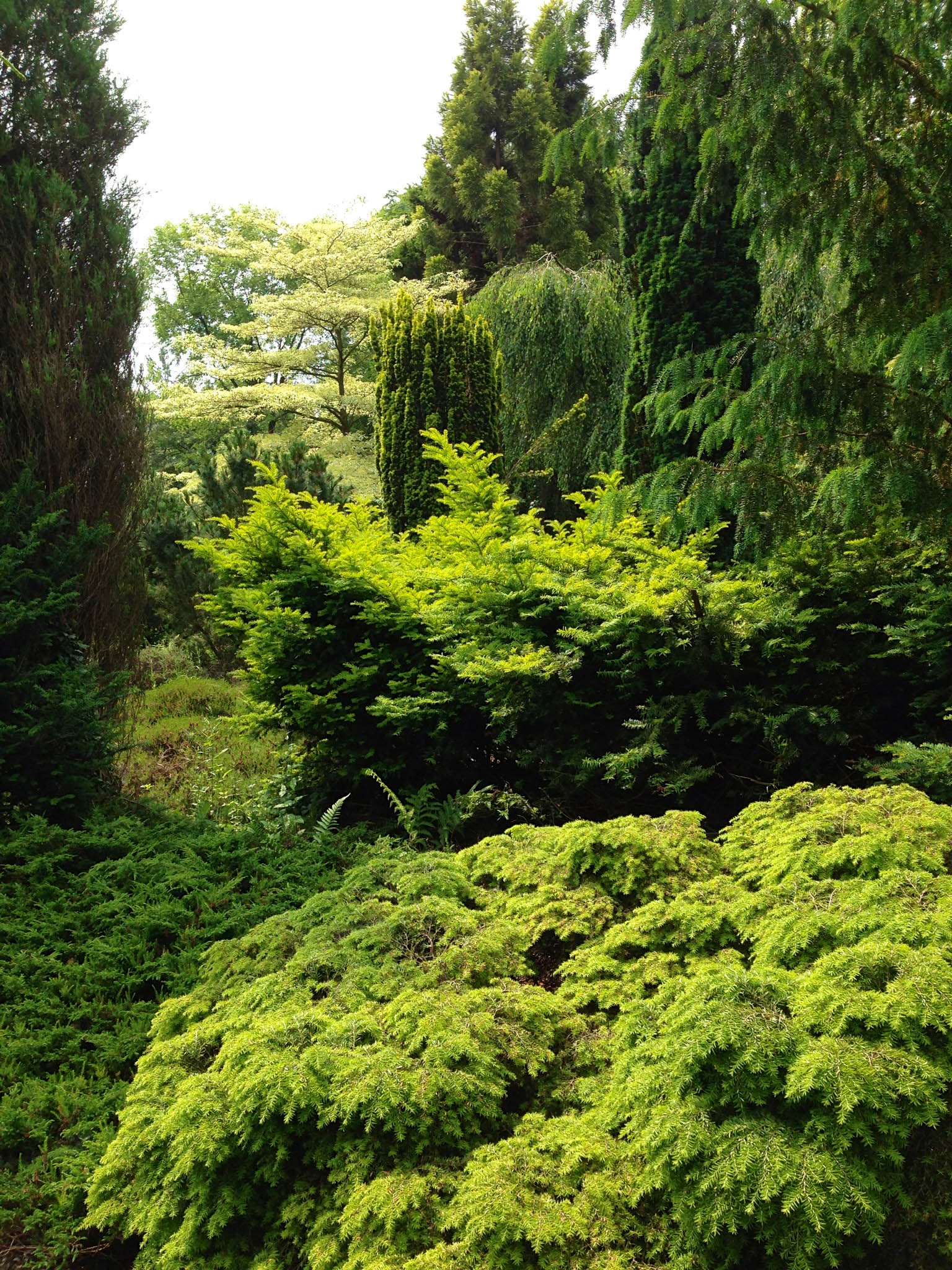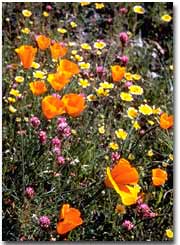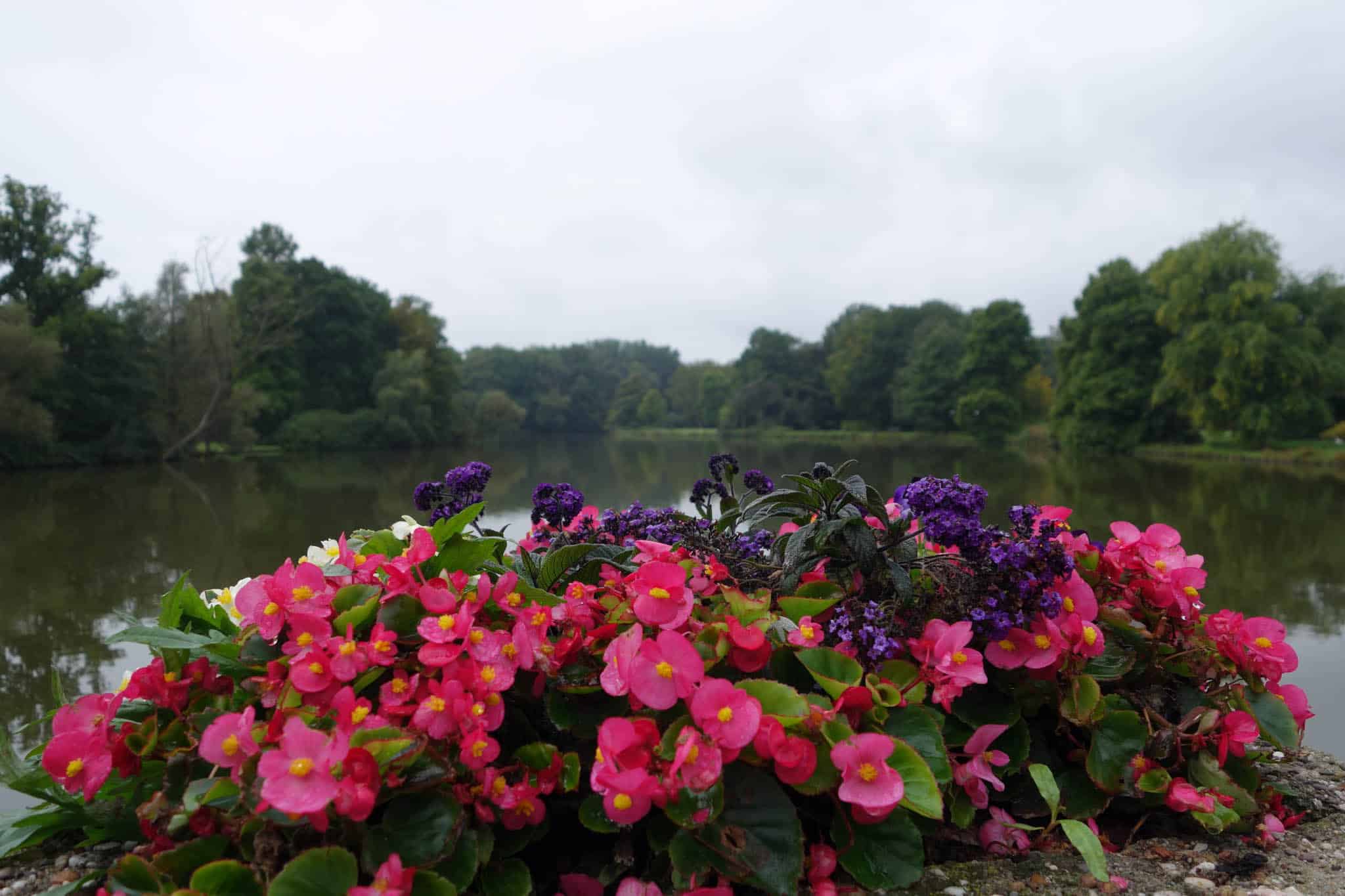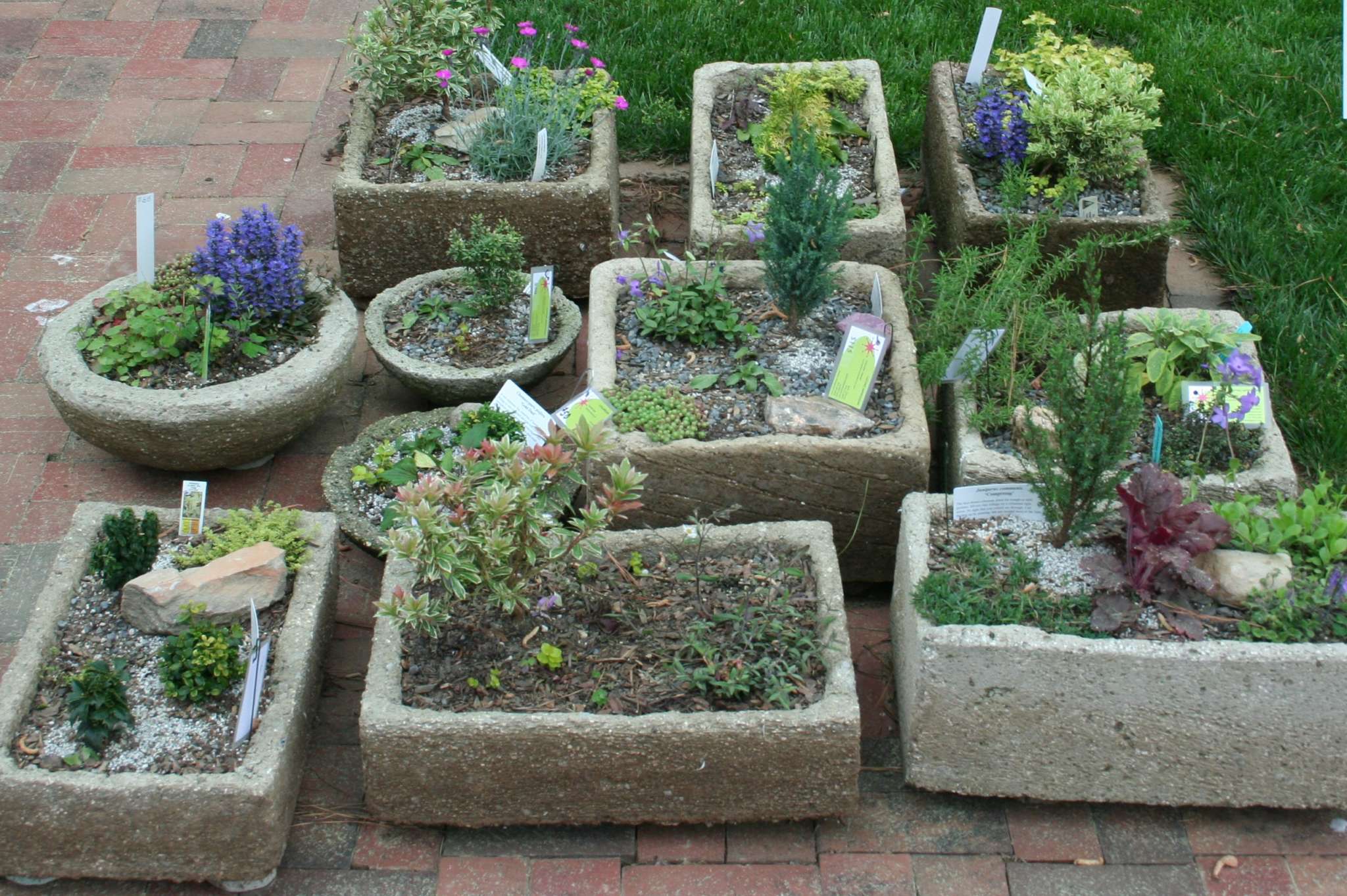
Trough Alpine Gardening – Skilled Gardening Ideas
[ad_1]
Itemizing
of Alpine Crops and use::
THEME TROUGHS
An incredible supply of
pleasure to me, is to design and plant out “Theme” troughs. There are a lot of
tons of of theme concepts if you happen to use your creativeness.What about:
Crops out of your favorite nation
Troughs planted along with your favorite colors
Single genus troughs
Troughs from an AGS/NARGS seedlist choice
Crops of architectural form
Silver leaved planting
schemes
Ericaceous solely troughs
Crops that flower in your birthday week (Properly
perhaps that’s going a bit too far)
However you get the thought, don’t you?
Let’s take a look
at a few of these:
NEW ZEALAND ALPINE
PLANTS IN TROUGHS
There are a lot of lovely crops from the Antipodes which might be
appropriate for trough tradition and a scheme could be designed to benefit from the color,
type and structure of those crops for a lot of a long-lasting season.
Regardless of what has usually been written about New Zealand flowers
being any shade of white, I hope to supply a various color vary on your
trough, from yellow buttercups and pink koromikos to blue harebells. Many, if
not all the crops which might be talked about could be obtained from the seedlist
provided as a part of the membership advantages of the NZAGS.
The New Zealand flora has numerous specimen crops to
supply for trough lovers. The Helichrysums,
coralloides and selago, make compact, but stately additions to the
trough backyard and are fascinating focal factors with their “woolly” whipcord
foliage and yellow daisy flowers. Different focal crops embody Leucopogon suaveolens (chameleon-like foliage),
Carmichaelia monroi ( purple pea flowers)
and naturally the dwarf Coprosmas, so beautiful in
their high-quality berrying types. (NB: You’ll need each male and
feminine crops to induce fruiting). For these of you who haven’t any sense of
ache, there are the “Spaniards” , a most deadly however architecturally good-looking
genus of crops. The sword-like leaves are loyal of their capacity to
pierce you the place it hurts essentially the most. Watch out for Aciphylla horrida, which as its particular epithet
implies is “horrid”. One destructive encounter with this and you’ll by no means backyard
once more. A saving grace with this race of thugs, is that it does present a quantity
of dwarfer specimens which, though no much less fearsome, are sufficiently small to be
averted with some care. Aa. dobsonii,
spedenii and congesta are
species on this class and properly value their place in a trough however not,
I hasten so as to add, in a spot simply accessible to kids.
For cushion crops, you may’t go far
incorrect in selecting varieties and species of the NZ choices. Celmisia argentea, a good cushion of small spiny
rosettes of silver, needle-like leaves and pure white, sessile daisy flowers
with a golden boss. An actual gem for the trough however will most likely want safety
from moist winter days. It’s bigger cousin C.sessiliflora is equally appropriate for a trough and
is presumably simpler to domesticate. Pygmaea (Chionohebe)
pulvinaris is one other splendid cushion which in England, a minimum of,
has tailored to cultivation with out safety and types darkish inexperienced cushions,
lined, if one is lucky, with tiny white flowers.The Abrotanella and Colobanthus species, while not as elegant because the
different cushion crops talked about are, nonetheless, glorious trough crops, the
latter having shiny inexperienced cushions which may mild up a trough on the darkest
of days.
For crevices, there are some great, though extraordinarily
tough topics to select from. Lignocarpa
carnosula is a fleshy plant with leaves paying homage to a stag’s
antlers in a fantastic shade of grey-blue. The yellow flowers lie beneath the
foliage as if ready to erupt in a blaze of color, which after all they
by no means do however the anticipation continues to be there. Stellaria roughii is an actual tester however value any
effort to offer it with the situations it likes and deserves. Scree therapy
is about your solely probability and so a excessive crevice in a deep trough is presumably
the reply (This might additionally apply to the Lignocarpa). Different crops for a crevice embody Wahlenbergia cartalaginea (the fleshy harebell),
Swainsona novae-zealandia (with glaucous,
pinnate foliage and pink flowers) and Hectorella
caespitosa (a high-quality cushion plant additionally).
For the flat areas of the trough, there are some glorious
turf imitators. Scleranthus uniflorus will
type mounds, hummocks, cushions – you identify it- with obvious ease. Agrostis muscosa is a bluish cushion forming grass
(not lots of these about) and a few of the mat-forming Raoulias, like subulata and tenuicaulis may also unfold properly however in a
reserved method. One of many benefits of rising New Zealand crops, is that
they, like no others, really take pleasure in plant affiliation as an alternative of vying for
supremacy of the soil and its vitamins. Celmisias
and Gentians rising up via Scleranthus uniflorus will not be an unusual web site in a
trough. This may after all be made to occur by sowing seeds instantly into the
cushions and mats.
For the sides of the trough and to cascade over the edges,
there are some pretty Parahebes,
Raoulias and Pimelias
with quite a lot of foliage type and color to select from. Among the higher
ones are Parahebe linifolia, with darkish
inexperienced shiny foliage and sky-blue flowers, Raoulia
grandiflora with uncommon (for members of the Asteraceae) stellate
flowers and nearly saxifraga-like rosettes of silver and Pimelia prostrata with its pink stems, gray leaves
and creamy-white flowers.
Many plant lovers have a particular affinity with a international
nation. Maybe they’ve visited there, or perhaps they’ve pals or
kin there, or maybe it’s a particular dream to go there sooner or later. In the event you
have such an affinity with a selected nation, then why not have a each day
reminder of that nation’s flora by making the hassle now, to plant up that
“particular” trough backyard.
Now what about –
TROUGHS PLANTED
WITH YOUR FAVOURITE COLOURS?
OK, I do know it sounds a bit _ _ _ _ _ _ (you’re entitled to
enter any phrase you assume adequately describes the subject….however bear in mind, this a
a “household pleasant” web site).
Give it some thought although. Everybody has their favorite soccer
group…mine simply occurs to be Manchester Metropolis (and it took a whole lot of braveness to
admit that). Their colors are sky-blue and white (Campanulas and Celmisias).
Or what about that marriage ceremony bouquet with yellow and white tea roses. (Ranunculus and Arenaria) or
the favorite sweatshirt in purple and cream (Penstemons and Aquilegias)….Sure, I do know no person has a purple and cream
sweatshirt however use your creativeness.
Comply with the drift? Given some thought and preparation, it’s
doable to plant troughs to offer crops of various color and contrasts
all through the season. I’d be very fascinated with what concepts you come up
with.
Now to one thing marginally extra smart
THE SINGLE GENUS
TROUGH
These could be amongst essentially the most rewarding troughs of all
particularly if you wish to have color all of the 12 months spherical. There are such a lot of
genera to select from: Saxifrages, Primulas, Sedums, Sempervivums, Lewisias,
Arenarias, Campanulas and so on., and so on.
SAXIFRAGA
There may be nothing extra satisfying than a trough crammed with
saxifrages in spring. They’re amongst essentially the most accommodating of alpine crops
with species that can cascade, over the edges of a trough (S.oppositifolia), mound into excellent cushions
(Ss.pedemontana, iranica), type tight mats (Ss.georgii, hypostoma, stolitzkae), flower in acidic soils (S.lilacina) and provides essentially the most magnificent flowering
shows (S. ‘Tumbling Waters’). The
hybrids too, present a wealth of color S.‘Penelope’ (apricot), S.‘Love Me’ (salmon pink), S. ‘Judith Shackleton ‘(white) and
S. ‘Ellie Brinkerhof’ (deep maroon). There
are so many ‘new’ saxes coming into cultivation these days that the combos
are infinite. Whether or not massive or small, your trough is usually a mass of color
all through the spring.
PRIMULA
A lot will depend on the floriferousness of the clone however there
are some glorious trough primulas accessible via the commerce in the intervening time.
Typically brief lived (except repeatedly divided), they supply good color throughout
the spring. Ones to attempt are Pp minima, pedemontana,
allionii, viscosa, integrifolia, marginata, pubescens and the assorted hybrids which were constructed from these
and are actually typically accessible from nurseries
Simply a few examples there to encourage you to come back up
with your personal concepts. Clearly, you’ll know which crops carry out properly for you
and these ought to be your first selection however attempt these you by no means considered…they
might properly shock you. The opposite aspect after all to planting a SGT is that you simply
might very properly be rewarded with a model new hybrid.
TROUGHS FROM A SEEDLIST
COLLECTION
Yearly, we alpiners research the seedlists and hope that we
can get hold of that which we’ve got sought for a few years, or maybe that which is
comparatively new to cultivation and even that which we’ve got grown up to now however
sadly misplaced.
This subsequent time, why not select crops which might be amenable to
trough cultivation and sow them instantly right into a trough. This isn’t as
tough as it could at first seem. Put together your trough, full with
landscaping, together with crevices and so on. and fill it with a compost much like what
you’d usually use on your seed sowing. Make sure that the compost has
settled properly after which simply sprinkle on the seed. You’ll be shocked how properly
this works. In actual fact, I’ve had success with this methodology the place beforehand, all
makes an attempt at germination of sure species had failed. Strive it with say, 10% of
the seeds you obtain and I’m positive that you can be happy with the
outcomes.
|
SUGGESTED PLANTING 1. Juniperus communis 2. Dianthus ‘Pikes Pink’ 3. Saxifraga x elisabethae 4. Androsace sempervivoides 5. Saxifraga ‘Silver 6. Sempervivum ‘Black Prince’ 7.Phlox subulata ‘Temiscaming’ 8. Anemone blanda |
|
Trough Two 1.Juniperus communis compressa 2. Gentiana acaulis 3. 4. Saxifraga ‘Whitehills’ 5. Armeria 6.Saxifraga x elisabethae ‘Primrose Dame’ 7. Phlox subulata 8. Dianthus ‘La Bourbille’ |
Trough Three
1. Dianthus ‘Pink Jewel’
2. Androsace sarmentosa
3.Sedum spathulifolium
4. Saxifraga x
apiculata
5. Erinus alpinus
6. Sempervivum arachnoideum
7.Sedum
‘Dudley Subject’
Trough 4
1.Saxifraga ‘Penelope
2.
Asperula gussonnii
3. Draba hispanica
4. Saxifraga hypostoma
5.
Saxifraga stolitzkae
6. Saxifraga x hornibrookii ‘Ellie Brinkerhof’
7. Saxifraga oppositifolia ‘Theoden’
8. Saxifraga ‘Love Me’
9.
Saxifraga oppositifolia x biflora
10. Saxifraga ‘Primrose
Bee’
PLANTS SUITABLE FOR THE
TROUGH GARDEN
The next listing of crops has been urged by Duncan.
While I’d not disagree with the validity of their declare to be appropriate
candidates for a trough backyard, what could also be “Appropriate in Seattle” (appears like
a superb identify for a movie that!), might not reply so readily in San Antonio or
Salford. I’d advise you due to this fact to test the hardiness necessities of
the crops you want to develop, along with your native nurseryman. He’ll advise
you of their suitability on your surroundings.
It could properly, in time, be
doable to listing a extra complete database of trough crops which is
interactive. You understand the kind of factor….choose a color, a top, a
flowering season and so on. and up comes a range so that you can select from. That is
fairly an formidable mission however as the positioning is ever-expanding, who is aware of what
the long run will deliver. Within the meantime you’ll have to learn up in your alpine
books for full descriptions of these listed.
ALYSSUM CAESPITOSUM
ANDROSACE
CARNEA HYB. “LAVENDER GLOW”
ANDROSACE CARNEA X PYRENAICA
ANDROSACE
CARNEA X PYRENAICA “CALLISTO”
ANDROSACE CARNEA X PYRENAICA “JUPITER”
ANDROSACE CARNEA X PYRENAICA “MARS”
ANDROSACE CARNEA X PYRENAICA
“MILLSTREAM”
ANDROSACE CARNEA X PYRENAICA “VENUS”
ANDROSACE
CYLINDRICA
ANDROSACE CYLINDRICA X HIRTELLA
ANDROSACE CYLINDRICA X
PYRENAICA
ANDROSACE HEDRAEANTHA
ANDROSACE HIRTELLA
ANDROSACE
CHAMAEJASME V. LEHMANNIANA
ANDROSACE MUCRONIFOLIA
ANDROSACE PUBESCENS
ANDROSACE PYRENAICA
ANDROSACE SEMPERVIVOIDES “GREYSTONE”
ANDROSACE STRIGILLOSA
ANDROSACE VANDELLII
ANDROSACE VILLOSA
ANEMONE DRUMMONDII
ANEMONE xLESSERI
AQUILEGIA JONESII
AQUILEGIA
SCOPULORUM
ARABIS MICROPHYLLA
ARENARIA TETRAQUETRA GRANATENSIS
ARTEMISIA CAUCASICA SSP CAUCASICA
ARTEMISIA GLACIALIS
ASPERULA
GUSSONII
ASTER STRACHEYI
ASTILBE GLABERRIMA “SAXATILIS”
BESSEYA ALPINA
BOLAX GLEBARIA NANA
CALANDRINIA CAESPITOSA
CALANDRINIA SERICEA [MONTIOPSIS SERICEA]
CAMPANULA ALPESTRIS
C.ALLIONII
CAMPANULA ALPINA
CAMPANULA “BUMBLEBEE” {C.PIPERI “MT.
TAHOMA” X C.LASSIOCARPA}
CAMPANULA CARPATICA “GRAHAM GIANT”
CAMPANULA
CHAMISSONIS
CAMPANULA CHAMISSONIS “OYOBENII”
CAMPANULA CHORUHENSIS
CAMPANULA COCHLEARIFOLIA “ELIZABETH OLIVER”
CAMPANULA x HAYLODGENSIS
{C.CARPATICA X C.COCHLEARIFOLIA}
CAMPANULA HAKKIARICA
CAMPANULA
HERCEGOVINA “NANA”
CAMPANULA “LYNCHMERE” {C.ELATINES X C.ROTUNDIFOLIA}
CAMPANULA “MAI BLYTH”
CAMPANULA PERSICIFOLIA V. PLANIFLORA {C.NITIDA}
CAMPANULA PERSICIFOLIA V. PLANIFLORA “ALBA”
CAMPANULA PIPERI ALBA
“TOWNSEND RIDGE”
CAMPANULA PIPERI “MARMOT PASS”
CAMPANULA PIPERI “MT.
TAHOMA”
CAMPANULA PIPERI “TOWNSEND VIOLET”
CAMPANULA PULLA
CAMPANULA x PULLOIDES {C.CARPATICA X C.PULLA}
CAMPANULA PSEUDO-RAINERI
CAMPANULA RAINERI
CAMPANULA ROTUNDIFOLIA SSP. ARCTICA
“MT.JOTUNHEIMEN”
CAMPANULA SAXIFRAGA
CAMPANULA SCABRELLA
CAMPANULA SCABRELLA “IRONSTONE”
CAMPANULA SHETLERI
CAMPANULA
TOMMASINIANA
CAMPANULA TRIDENTATA
CAMPANULA “WARLEY WHITE”
CHAENORHINUM GLAREOSUM
CLAYTONIA MEGARHIZA V. NIVALIS
CLEMATIS
MARMORARIA
DELOSPERMA ASHTONII
DELOSPERMA CONGESTUM
DELOSPERMA SP. AFF. DELEEUWIAE
DELOSPERMA SPECIES- WHITE
DOUGLASIA
IDAHOENSIS
DOUGLASIA LAEVIGATA v. LAEVIGATA
DOUGLASIA LAEVIGATA V.
LAEVIGATA “PACKWOOD”
DOUGLASIA LAEVIGATA V. CILIOLATA
DOUGLASIA
MONTANA
DOUGLASIA NIVALIS
DRABA ACAULIS
DRABA DEDEANA
DRABA
OREIBATA
DRACOCEPHALUM AFF: DISCOLOR [JJH]
DRACOCEPHALUM AFF
PAULSENII
DUDLEYA CYMOSA SSP. PUMILA
EDRAIANTHUS GRAMINIFOLIUS
EDRAIANTHUS GRAMINIFOLIUS SSP. NIVEUS [“ALBUS”]
EDRAIANTHUS PUMILIO
ERIGERON AUREUS
ERIGERON CHRYSOPSIDIS “GRAND RIDGE”
ERIGERON
COMPOSITUS “PINK FORMS”
ERIGERON COMPOSITUS “MT. ADAMS DWARF”
ERIGERON “GOAT ROCKS” {E.AUREUS X E.COMPOSITUS}
ERIGERON LEIOMERUS
ERIGERON OREGANUS
ERIOGONUM KENNEDYI V. ALPIGENUM {NNS-}
ERIOGONUM
PANGUICENSE V. ALPESTRE
ERIOGONUM OVALIFOLIUM
GENTIANA
ACAULIS
GENTIANA AFFINIS V. OVATA
GENTIANA NEWBERRYI
GENTIANA
PARADOXA
GENTIANA VERNA
GENISTA DELPHINENSIS
GYPSOPHILA
ARETIOIDES
GYPSOPHILA CERASTIOIDES
GYPSOPHILA LIBANOTICA
GYPSOPHILA NANA
HAPLOPAPPUS LYALLII
HELICHRYSUM PAGOPHILUM
HELICHRYSUM PAGOPHYLLUM
HELICHRYSUM SESSILIOIDES
HEUCHERA ELEGANS
HEUCHERA PULCHELLA
HOSTA “LEMONLIME”
HOSTA VENUSTA “PORTER”
HUTCHINSIA ALPINA
IRIS PUMILA “ATRO-VIOLACEA”
IRIS
SUAVEOLENS V. RUBROMARGINATA
KECKIELLA CORYMBOSA
LEONTOPODIUM
OCHROLEUCUM
LEUCANTHEMOPSIS RADICANS
LEWISIA COLUMBIANA V. COLUMBIANA
“ALBA”
LEWISIA COLUMBIANA V. RUPICOLA “SADDLE MT. FORM”
LEWISIA
COTYLEDON V. HECKNERI
LEWISIA COTYLEDON “REGENBOGEN STRAIN”
LEWISIA
“GEORGE HENLEY” [L.COLUMBIANA X L.COTYLEDON]
LEWISIA LONGIPETALA
LEWISIA “NORMA JEAN’ [L.COLUMBIANA ALBA X L.COTY.V.HECKNERI]
LEWISIA
REDIVIVA
LEWISIA REDIVIVA V. MINOR
LEWISIA TWEEDYI
MINUARTIA SAXIFRAGA SSP. TMOLEA
MORISIA HYPOGAEA
MORISIA MONANTHOS
PARRRYA NUDICAULIS
PENSTEMON CAESPITOSUS “ALBUS”
PENSTEMON
DAVIDSONII V. DAVIDSONII “MT. ADAMS DWARF”
PENSTEMON “DRAGONSTAIL”
PENSTEMON PROCERUS SSP. TOLMIEI
PENSTEMON PROCERUS SSP. TOLMIEI “HAWKEYE”
PENSTEMON RUPICOLA “MYRTLE HEBERT”
PHLOX DIFFUSA
PHLOX DIFFUSA
“ALBA”
PHLOX DOUGLASII “APPLEBLOSSOM”
PHLOX HENDERSONII
PHLOX
KELSEYI
PHLOX “SILENEFLORA”
PHYSOPLEXIS COMOSA
POTENTILLA
UNIFLORA
PRATIA PEDUNCULATA “COUNTRY PARK”
PRIMULA “AIREMIST”
PRIMULA ALLIONII “CLAUDE FLIGHT”
PRIMULA ALLIONII “EDINBURGH” [ELLIOT`S
FORM ]
PRIMULA ALLIONII HARTSIDE X APPLEBLOSSOM
PRIMULA ALLIONII “JCA
PRIMULA ALLIONII “KEN`S SEEDLING”
PRIMULA ALLIONII “MARION”
PRIMULA ALLIONII “MARJORIE WOOSTER”
PRIMULA ALLIONII “PINK ICE”
PRIMULA ALLIONII “SNOWFLAKE”
PRIMULA ALLIONII “WILLIAM EARLE”
PRIMULA
ALLIONII x “LINDA POPE ALBA”
PRIMULA X BERNINAE “WINDRUSH”
PRIMULA x
BILECKII P.”BLAIRSIDE YELLOW
PRIMULA “CLARENCE ELLIOT”
PRIMULA
X-DESCHMANNII
PRIMULA “ETHEL BARKER”
P.HIRSUTA
PRIMULA “HEMSWELL
BLUSH”
PRIMULA MARGINATA “KESSELRING`S VARIETY”
PRIMULA MARGINATA
“PRITCHARD`S VARIETY”
PRIMULA “MARS”
PRIMULA MINIMA
PRIMULA
“PEARDROP” (P.ALLIONII X OLD RED DUSTY MILLER X ALLIONII)
PRIMULA “PINK
ICE” [P.ALLIONII X P.”HARLOW CARR”]
PRIMULA X-PUBESCENS “BOOTHMANS
VARIETY”
PRIMULA X-PUBESCENS “CREAM VISCOSA”
PRIMULA X-PUBESCENS
“KATH DRYDEN”
PRIMULA X-PUBESCENS “PAT BARWICK”
PRIMULA “WHARFDALE
LING”
PULSATILLA PRATENSIS SSP. BOHEMICA
PULSATILLA VERNALIS
RANUNCULUS ALPESTRIS
RANUNCULUS CRENATUS
RANUNCULUS FICARIA “BRAZEN
HUSSY”
RHINEPHYLLUM BROOMII
RUSCHIA PUTTERILLII
SAGINA BOYDII
SAPONARIA “BRESSINGHAM HYBRID”
SAPONARIA x OLIVANA
SAXIFRAGA COCHLEARIS “MINOR”
SAXIFRAGA X ZIMMETERI [S.AIZOON X
S.CUNEIFOLIA]
SAXIFRAGA “ALBERT`S DARK YELLOW”
SAXIFRAGA X ANGLICA
“BEATRIX STANLEY”
SAXIFRAGA X ARCO-VALLEYI “HOCKER`S EDGE”
SAXIFRAGA
X BORISII “MARIANNA”
SAXIFRAGA X BORISII “MONA LISA”
SAXIFRAGA X
BOYDII “ARETIASTRUM”
SAXIFRAGA X BOYDII “CHERRY TREES”
SAXIFRAGA X
BOYDII “FALDONSIDE”
SAXIFRAGA X BOYDII”HINDHEAD SEEDLING”
SAXIFRAGA X
BURSERANA “PRINCESS”
SAXIFRAGA X BURSICULATA “KING LEAR”
SAXIFRAGA X
ELISABETHAE “BOSTON SPA”
SAXIFRAGA X ELISABETHAE “PRIMROSE DAME”
SAXIFRAGA GRISEBACHII
SAXIFRAGA X IRVINGII “JENKENSIAE”
SAXIFRAGA X
IRVINGII “WALTER IRVING”
SAXIFRAGA JUNIPERIFOLIA
SAXIFRAGA “KATH
DRYDEN”
SAXIFRAGA X KELLERERI “JOHANN KELLERER”
SAXIFRAGA X KELLERERI
“SUNDERMANNII MAJOR”
SAXIFRAGA X KEWENSIS
SAXIFRAGA KOTSCHYI
SAXIFRAGA X MALBYANA “PRIMULINA”
SAXIFRAGA OPPOSITIFOLIA “FLORISA”
SAXIFRAGA “PERLE ROSE”
SAXIFRAGA “ROSEMARIE”
SAXIFRAGA X ROSINAE ”
ROSINA SUNDERMANN”
SAXIFRAGA X SALMONICA “MARIE LOUISA”
SAXIFRAGA X
SALMONICA “MELROSE”
SAXIFRAGA X SALMONICA “SALOMONII”
SAXIFRAGA
SEMPERVIVUM
SAXIFRAGA X WEBRII “PYGMALION
SAXIFRAGA PENTADACTYLIS
SCUTELLARIA ALPINA
SCUTELLARIA PROSTRATA
SEDUM PILOSUM
SHORTIA GALACIFOLIA
SILENE ACAULIS “FRANCES”
SILENE ACAULIS
“WHITE RABBIT”
SILENE ARGAEA
SILENE PETERSONII
SOLIDAGO
SPATHULATA F. NANA
SPRAGUEA UMBELLATA
TALINUM OKANOGANENSE
TALINUM SPINESCENS
TIARELLA “TIGER STRIPE”
TOWNSENDIA ALPINGENA
(T.MONTANA)
TOWNSENDIA EXSCAPA
TOWNSENDIA JONESII
TOWNSENDIA
SPATHULATA
VALERIANA SUPINA
VIOLA ADUNCA
ORNAMENTAL
GRASSES
CAREX FIRMA VARIEGATA
FESTUCA OVINA V. GLAUCA “MINOR”
DWARF, COMPACT OR SLOW GROWING SHRUBS
DAPHNE ARBUSCULA
DAPHNE
KOSANINII
KALMIOPSIS FRAGRANS ” LePINIEC FORM” [K.LEACHIANA]
POTENTILLA FRUITICOSA “CASCADE CUSHION”
RHODODENDRON CALOSTROTUM SSP.
KELETICUM
RHODODENDRON CALOSTROTUM SSP. RADICANS “ROCK FORM”
RHODODENDRON KEISKEI “YAKU FAIRY”
RHODODENDRON SALUENENSE SSP.CHAMEUNUM V.
PROSTRATUM
RHODODENDRON “WREN”
SALIX REPENS
SALIX RETICULATA
VACCINIUM MACROCARPON “HAMILTON”
Having, we hope, persuaded you to
experiment with varied themes, we predict that it’s time to get these seed and
plant catalogues out, or bounce within the automotive and head off to your nearest nursery
and take a look at the trough crops accessible. To help you in your selection, different
articles and listings alongside this theme could be discovered on every of our websites on the
following addresses.
The
Trough Backyard

[ad_2]
Supply hyperlink


